Table of contents
Kohlrabi ( Brassica oleracea var. gongylodes) is a spring vegetable ( organic) that is now available all year round and can be eaten raw, cooked or fermented.
Use in the kitchen
Kohlrabi has a mild, slightly sweet and nutty taste that reminds some people of broccoli. Depending on the anthocyanin content, the bulbs and stems are whitish, greenish, reddish or violet-blue (red-blue). The varieties do not differ noticeably in taste. The bulb is primarily used in kohlrabi, which is not a root but the thickened, above-ground stem. The extremely healthy leaves of kohlrabi, which are said to be even more nutritious than the stem, can also be used. They can be processed like other leafy vegetables and added to salads or soups, for example.
Do you have to peel kohlrabi? You don't necessarily have to peel kohlrabi if its skin is fine and thin. Then it's enough to wash the vegetable well. If the skin is hard and fibrous, you should remove it with a sharp knife or vegetable peeler.
Can you eat kohlrabi raw? The tuber is best eaten raw. How can you prepare kohlrabi raw? As a raw food, kohlrabi is ideal grated or sliced as a salad or carpaccio. As a simple kohlrabi (raw) recipe, we recommend cutting it into strips and serving it with various dips as a snack or aperitif.
How do you eat kohlrabi? As well as eating it raw, kohlrabi can also be steamed, boiled, baked or grilled. Briefly sautéed, it makes a good side dish for all kinds of vegetarian and vegan dishes. The cabbage can also be made into a puree, served as a cream of kohlrabi soup, chopped into vegetable soups and used as an ingredient in stews (e.g. with lentils), casseroles, gratins (e.g. with potatoes) and curries (e.g. with chickpeas and tofu). A popular dish is stuffed kohlrabi, which can be baked in the oven depending on your taste. Rice, bulgur, quinoa and other vegetables (e.g. zucchini, spring onions, carrots, sweet peppers) can be used as fillings. Whole kohlrabi bulbs can be boiled in enough water and used as a side dish. Vegetable quiches can also be made wonderfully with kohlrabi. Kohlrabi goes well with spices and herbs such as nutmeg, parsley, tarragon and dill.
You can cook unusual dishes with kohlrabi, such as kohlrabi and carrot fritters (rösti), kohlrabi fries or kohlrabi lasagne, where you replace the pasta sheets with kohlrabi slices. You can also make a vegan, breaded schnitzel with kohlrabi. You can press the tuber with fruit to make a healthy smoothie. Kohlrabi is preserved in a similar way to sauerkraut by fermenting it with salt and spices.
Recipe for vegan kohlrabi carpaccio
Ingredients (for 2 people): 1 kohlrabi (raw, organic), 80 g nuts (e.g. walnuts, macadamia nuts, pecans, hazelnuts), 100 ml oat milk, 1 tbsp yeast flakes, 1 tsp lemon juice, 1 tsp mustard, 1 clove of garlic, some paprika powder, salt andpepper, a fewpumpkin seeds.
Preparation: Peel the kohlrabi and slice or cut into very thin slices. Spread the slices out on a plate. Put the nuts, oat milk, yeast flakes, lemon juice, mustard and garlic in a bowl and puree everything well. Season with a little paprika powder, salt and pepper and then pour onto the kohlrabi slices. Garnish the vegan kohlrabi carpaccio with pumpkin seeds and serve.
Vegan recipes with kohlrabi can be found under the note: " Recipes that have the most of this ingredient ".
| Not only vegans or vegetarians should read this: Vegans often eat unhealthily. Avoidable nutritional errors. |
Purchasing - Storage
Kohlrabi can be bought in most supermarkets (e.g. Coop, Migros, Denner, Volg, Spar, Aldi, Lidl, Rewe, Edeka, Hofer, Billa) and organic supermarkets (e.g. Alnatura and Denn's Biomarkt) all year round, often in organic quality (bio). If you want really fresh and local kohlrabi, the best thing to do is go to the weekly market or directly to the farmer. Kohlrabi is in season in Central Europe from around May to October. Depending on the geographical location, kohlrabi is available from local producers as early as March, April and even November. 11
When buying, we recommend looking for a crack-free skin and fresh, green and crisp leaves. The larger the tuber, the more likely it is to be woody.
The availability of kohlrabi varies depending on the size of the store, catchment area, etc. If you are interested, click on our recorded food prices for the DA-CH countries (above under the ingredient image). There you will find current prices from various supermarkets and their price development.
Storage tips
It is best to store the kohlrabi bulb in the vegetable compartment of the refrigerator after removing the leaves. It will last for about a week. Wrapped in a damp cloth, it will keep for up to four weeks. You can also freeze it. To do this, you should remove the leaves, peel the kohlrabi completely and cut it into bite-sized pieces. Can you freeze kohlrabi raw? Kohlrabi can also be frozen raw, but it loses its color when thawed. Kohlrabi pieces can also be put in the freezer after being briefly blanched in boiling salted water and cooled in ice water. Kohlrabi will keep for about a year when frozen.
Ingredients - Nutritional values - Calories
With 27 kcal (calories raw kohlrabi) and 0.1 g fat per 100 g, the vegetable is very low in calories and almost fat-free. Other kohlrabi nutritional values such as proteins are also rather low at 1.7 g/100g. Does kohlrabi have sugar? Of the 6.2 g carbohydrates (raw kohlrabi) per 100 g, 2.6 g are sugar. 1
What vitamins does kohlrabi contain? It is rich in vitamin C, for example (62 mg/100g; 78% of the daily requirement). Sugar snap peas (60 mg/100g) and red cabbage (57 mg/100g) contain a similar amount. Yellow bell peppers contain a particularly high amount of vitamin C, at 184 mg/100g . 1
The potassium content is 350 mg/100g (18% of the daily requirement). This is similar to that of Brussels sprouts (389 mg/100g) and broccoli (316 mg/100g). Kale has a little more at 491 mg/100g, but a significantly higher value of the macronutrient can be found in dried tomatoes (3,427 mg/100g). 1
In addition, raw kohlrabi contains 0.15 mg/100g of vitamin B6 (pyridoxine) (11% of the daily requirement). Broccoli (0.18 mg/100g) and celeriac (0.16 mg/100g) have similar contents. Yeast flakes contain almost 10 times as much vitamin B6 at 2.9 mg/100g. 1
You can find all the ingredients of kohlrabi, the coverage of the daily requirement and comparison values with other ingredients in our nutrient tables. In the article Nutrients explained you will get a detailed insight into the topic.
Health effects
What is kohlrabi good for? Kohlrabi is excellent for losing weight due to its low calorie and fat content. It is also easy to digest raw and, compared to other types of cabbage, generally doesn't cause flatulence.
How healthy is kohlrabi? Kohlrabi and cruciferous vegetables in general are known to prevent numerous diseases such as diabetes, cancer and heart disease. This is because various metabolites (eg phenolic compounds, flavonoids, anthocyanins, carotenoids, glucosinolates, etc.) contained in cruciferous vegetables have anti-diabetic, anti-cancer, anti-inflammatory and antioxidant properties. 2 Studies show that the presence of phenolic compounds in kohlrabi correlates with anti-diabetic and antioxidant activities. 3
Another study indicates that kohlrabi has antimicrobial properties. Kohlrabi extracts could therefore potentially be used as a natural preservative in the food and pharmaceutical industries. 4
If you cook kohlrabi whole for about 20-30 minutes and then peel it, you can preserve some of the nutrients. Is raw kohlrabi healthy? You lose the least amount of valuable ingredients and nutrients if you wash it briefly, only peel what is necessary and eat kohlrabi raw. 5
Dangers - Intolerances - Side effects
Anyone who suffers from allergies or intolerances to cruciferous vegetables should avoid kohlrabi. Kohlrabi is also not suitable for people with a histamine intolerance.
Folk medicine - naturopathy
In traditional Chinese medicine ( TCM), kohlrabi is considered to stimulate digestion and detoxify. 6
Ecological footprint - animal welfare
The ecological footprint of regional kohlrabi is relatively low at 0.2 CO 2 eq per kg of food and is roughly equivalent to that of pumpkin and leek. 12 The amount of water required to produce 1 kg of the vegetable is also low at 280 litres. 13 Ideally, when shopping, you should pay attention to regionality and organic cultivation. Organic kohlrabi grows more slowly than conventionally grown kohlrabi because it does not use artificial fertilizers. 7 Nevertheless, the absence of artificial fertilizers is very valuable for the environment and the climate, but also for taste and health. According to studies, rats and rabbits can distinguish between conventionally and organically grown kohlrabi. They usually prefer organic quality. The offspring of animals fed organic kohlrabi are also stronger. 10 Due to the standards for fruit and vegetables that are sometimes prescribed by retailers, kohlrabi is usually sold with green leaves, which is intended to convey freshness and quality to the consumer. In order to ensure this for a longer period after harvest, additional treatments with nitrogen and pesticides are used shortly before harvest, which are unnecessary for the plant. 14 As a consumer, you can consciously choose kohlrabi without leaves.
It has not yet been possible to breed traditional, seed-stable and fast-growing varieties for organic cultivation. Therefore, there are also many hybrid varieties in organic cultivation. Nevertheless, it has been possible to breed voluminous organic kohlrabi with juicy, firm flesh. 7
Worldwide occurrence - cultivation
Kohlrabi is most likely an old cross between wild cabbage ( Brassica oleracea ssp. oleracea) and white wild turnip ( Beta vulgaris ssp. maritima). 7 The area of origin is probably in northern, northeastern and northwestern Europe. 5
Germany is not only the main consumer of kohlrabi, but also has the largest cultivation areas in the world (40,000 tons per year). A large part of kohlrabi cultivation has been shifted to Spain. The vegetable is also cultivated in Austria, Switzerland, the Netherlands, France, Italy, Romania and Poland. 8
Cultivation - Harvest
From mid-February, you can sow the kohlrabi seeds in pots with loose, humus-rich soil. Place the pots in a warm place (approx. 15–18 °C), e.g. on a windowsill or in a greenhouse. After around 6 weeks, or from the end of March, you can plant the seedlings outdoors. To do this, keep a distance of 30 x 30 cm between the plants. From mid-April, sow the seeds directly in the bed. The plants need regular water, and waterlogging should be avoided. The vegetable is ready for harvesting around 8–12 weeks after planting (it can be later depending on the variety). When harvesting, pay attention to the size of the tuber; the later you harvest, the sooner the tubers will be woody. To do this, cut the tubers off just above the base of the stem with a sharp knife or garden shears. 9
Further information
What is kohlrabi? Kohlrabi ( Brassica oleracea var. gongylodes) is one of the many cultivated forms of cabbage and belongs to the cruciferous family (Brassicaceae). The kohlrabi tuber is actually the compressed, thickened main shoot of the vegetable plant. The tuber shape ranges from spherical to flat-round to oval, with a diameter of between 5 and 20 cm, depending on the variety. How much does a kohlrabi weigh? Kohlrabi usually weighs between 350 and 500 g. However, depending on the variety, the weight can be between 100 g and over 8 kg.
In the EU, there are two quality classes of kohlrabi on offer. Class I kohlrabi must have a uniform appearance. Slight cracks are only permitted to a limited extent at the base of the leaf. Slight surface discoloration and spots are also only permitted on the underside. Roots and leaves must be cut close to the bulb. Slight deviations in shape and color are tolerated in Class II kohlrabi. Slight cracks in the flesh (no deeper than 10 mm) and skin defects that do not affect the flesh are also permitted. 5
Kohlrabi is grown outdoors and in greenhouses. In Germany, the majority of kohlrabi is grown outdoors. The type of cultivation also influences the taste: kohlrabi grown outdoors tastes spicier than kohlrabi grown in a greenhouse. The varieties are differentiated based on the amount of leaves, i.e. leafy and leafy varieties, and based on the growing season (early, summer, autumn varieties). 5
As with other types of cabbage, kohlrabi should be grown for a break of about four years in the same location to ensure good kohlrabi health.
Alternative names
Kohlrabi has several synonyms such as Oberkohlrabi, Oberrübe, Kohlrübe, Rübkohl and Stängelrübe. Incorrect spellings such as Kolrabi (or Kolrabi raw) creep in. The German name has prevailed in many languages. In English, kohlrabi is also called kohlrabi.
In Spanish, kohlrabi is called colirrrabano (colirrábano). The Romans called kohlrabi caulorapa, and kohlrabi is similar in Italian (kohlrabi italiano), cavolo rapa. 5
Bibliography - 14 Sources
| 1. | USDA United States Department of Agriculture. |
| 2. | Park CH, Yeo HJ, Kim NS, Eun PY, Kim S-J, Arasu MV, u. a. Metabolic profiling of pale green and purple kohlrabi (Brassica oleracea var. gongylodes). Appl Biol Chem. 2017;60(3):249–57. |
| 3. | Jung HA, Karki S, Ehom N-Y, Yoon M-H, Kim EJ, Choi JS. Anti-diabetic and anti-inflammatory effects of green and red kohlrabi cultivars (Brassica oleracea var. gongylodes). Prev Nutr Food Sci. 2014;19(4):281–90. |
| 4. | Ozusaglam MA, Karakoca K. Antimicrobial properties of Brassica oleracea var. gongylodes extracts against fish and human pathogens. Journal of Selcuk University Natural and Applied Science. 2013;0(0):37–46. |
| 5. | Lfl.bayern.de Der Kohlrabi. |
| 6. | Therapeutika.ch Kohlrabi. |
| 7. | Pini U. Das Bio-Food Handbuch. Ullmann Verlag: Potsdam; 2014: 397. |
| 8. | Gemuesekorb.info Kohlrabi. |
| 9. | Mein-schoener-garten.de Kohlrabi anbauen: Tipps für eine gute Ernte. |
| 10. | Umweltberatung.at Kohlrabi - oft unterschätzt. |
| 11. | Lebensmittellexikon. Saisonkalender Obst- und Importkalender. 2023. |
| 12. | Reinhardt G, Gärtner S, Wagner T. Ökologische Fussabdrücke von Lebensmitteln und Gerichten in Deutschland. Institut für Energie- und Umweltforschung Heidelberg. 2020. |
| 13. | Mekonnen, M.M. and Hoekstra, A.Y. The green, blue and grey water footprint of crops and derived crop products, Value of Water Research Report Series No. 47, UNESCO-IHE, Delft, the Netherlands. 2010. |
| 14. | Ebert V, Gerwing E. Umwelt- und klimarelevante Qualitätsstandards im Lebensmitteleinzelhandel. Umweltbundesamt. 2020. |

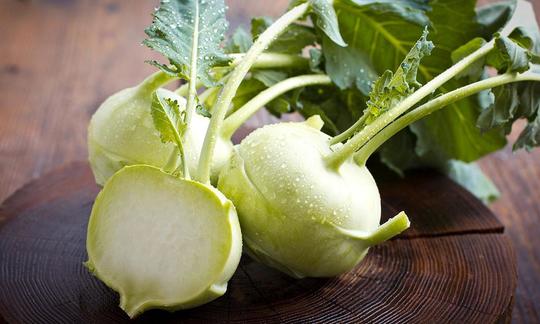

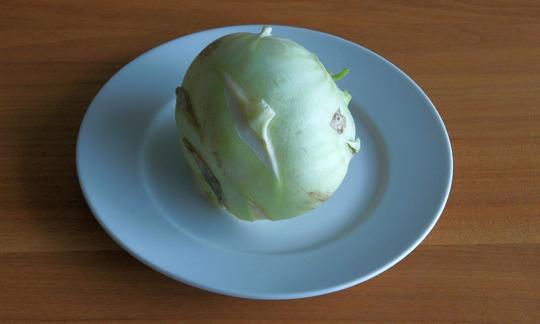

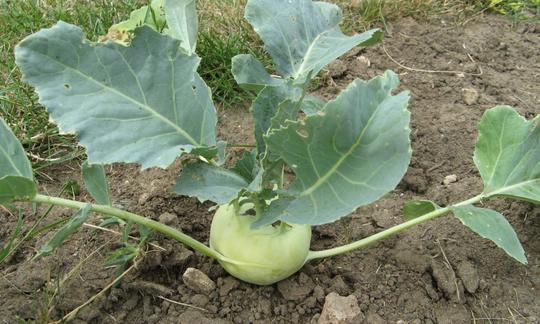

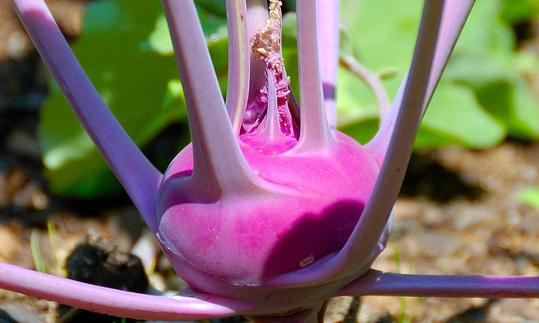

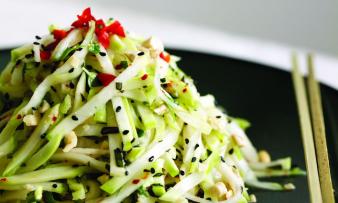
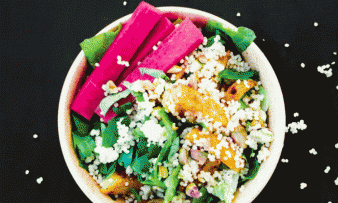
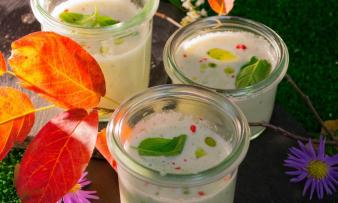





Comments